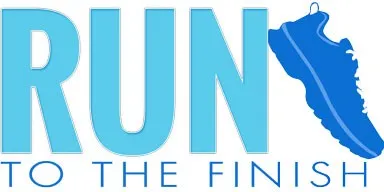When it comes to running injuries, there’s a lot of advice floating around, some of it helpful, some of it… not so much. The tricky part? It’s easy to get caught up in outdated or just plain wrong info that ends up doing more harm than good. So it’s time that we squashed some of these injury prevent myths.

That’s why we brought in someone who really knows their stuff. On a recent episode of the Tread Lightly Running podcast, we chatted with Dr. Victoria Seckley, a physical therapist, run coach, and strength coach, about some of the most common myths runners believe when it comes to injury prevention.
With nearly a decade of experience helping runners move and feel better, she brought the kind of insight and honesty we all need more of in these conversations.
We’re breaking down a few of the myths in this blog, but you’ll need to tune into the episode to hear the rest.
Injury Myths That Need to be Squashed
There’s no shortage of running advice out there, but some of it can send you down the wrong path, especially when it comes to injuries. The reality is that every runner and every injury is a little different. What works for one person might not work for the next, and there’s rarely a one-size-fits-all solution.
As coaches, we’ve heard our fair share of myths, some that make us pause, others that have us wondering how they even started in the first place.
Before you put too much trust in a quick Google search or social media post, let’s break down three of the myths we talked through with Dr. Seckley.
Myth: Stop Running Is Always the Answer
One of the most frustrating things a runner can hear? “Just stop running.”
Sure, full rest might be necessary in some cases, like bone stress injuries, but for most common running aches and pains, that advice misses the mark.
According to Dr. Victoria Seckley, stopping all activity isn’t always the answer. In fact, keeping some level of running in your routine (with smart adjustments) can actually speed up the recovery process.
The key? Load management. It’s not about pushing through pain, but about finding the right balance so your body can heal without losing the progress you’ve made.
This research study from the BMJ Open Sport and Exercise Medicine discusses how load management allows runners to maintain their activity levels while addressing issues early, potentially preventing minor discomforts from escalating into serious injuries.
Unfortunately, many traditional PT settings aren’t built for that kind of athlete-specific care. That’s why Dr. Seckley encourages runners to work with a PT who truly understands the demands of the sport, someone who won’t just hand you a sheet of clamshells to do for six weeks.
That said, we know access to running focused PTs isn’t always realistic. Whether it’s insurance, cost, or where you live, a lot of runners are left to figure things out on their own.
So what can you do? Start with a short rest period to let things settle, then ease back into movement. Pay attention to how your body responds, and don’t be afraid to adjust as needed.
Myth: Pilates Is Strength Training
This is a hot topic on social media at the moment, so of course, we had to talk about it.
Let’s be clear, Pilates is a great workout. It’s a fantastic way to build core control, improve mobility, and ease back into movement, especially if you’re new to running or coming off an injury.
But… it’s not strength training.
Strength training, especially for runners, means progressive overload, gradually lifting heavier weights over time to actually build muscle and resilience. That’s the kind of stress your body needs to better handle the demands of running.
Pilates might leave you sore (those tiny pulses are no joke), but high-rep bodyweight work doesn’t deliver the kind of load needed to support serious training. Think of it as a great complement to your routine, not a replacement for strength work with real resistance.
So yes, do your Pilates. But if your goal is to run strong and stay injury-free? Don’t skip the heavy stuff.
Myth: Under-Fueling Can’t Cause an Injury
If there’s one myth we could shout about from the rooftops, it’s this one: underfueling CAN cause an injury and even delay recovery.
Whether it’s skipping breakfast, skimping on post-run meals, or just not eating enough throughout the day, not giving your body what it needs can seriously derail your training.
And no, it doesn’t matter if you’re running a 5K or gearing up for a marathon; if you’re underfueling, you’re putting your progress (and health) at risk.
Fueling isn’t just about hitting a new PR. It’s about staying strong, healthy, and able to show up for workout after workout.
As Dr. Victoria Seckley put it perfectly, “Food, not just ‘fuel’, is what helps your muscles grow, what helps your body move forward.”
A study published in the Journal of Science and Medicine in Sport analyzed data from nearly 6,000 distance runners and found that underfueling, especially not eating enough fat or fiber, can increase your risk of injury. Injured female runners were eating about 450 fewer calories and 20 grams less fat per day than those who stayed healthy.
The takeaway? Eating enough isn’t just about energy for your runs; it plays a huge role in recovery, hormone health, and keeping you injury-free.
Fuel your body like it’s part of your training plan because it is.
Not sure if you’re getting enough? We’ve got a few key signs to watch for, and what you can do to make sure you’re giving your body what it needs to keep running strong.
These are just a few of the myths that Victoria broke down in our latest episode of the Tread Lightly Podcast. From pronation to the mental side of pain to whether pilates counts as strength training, we covered a lot, and you’ll want to listen to it all.
Injury prevention isn’t about finding one magic fix. It’s about understanding your body and making decisions that support your long-term progress. We hope this blog and podcast episode helped to truly put some of these injury prevention myths to bed.



 7 Fastest Marathon Courses In The United States
7 Fastest Marathon Courses In The United States